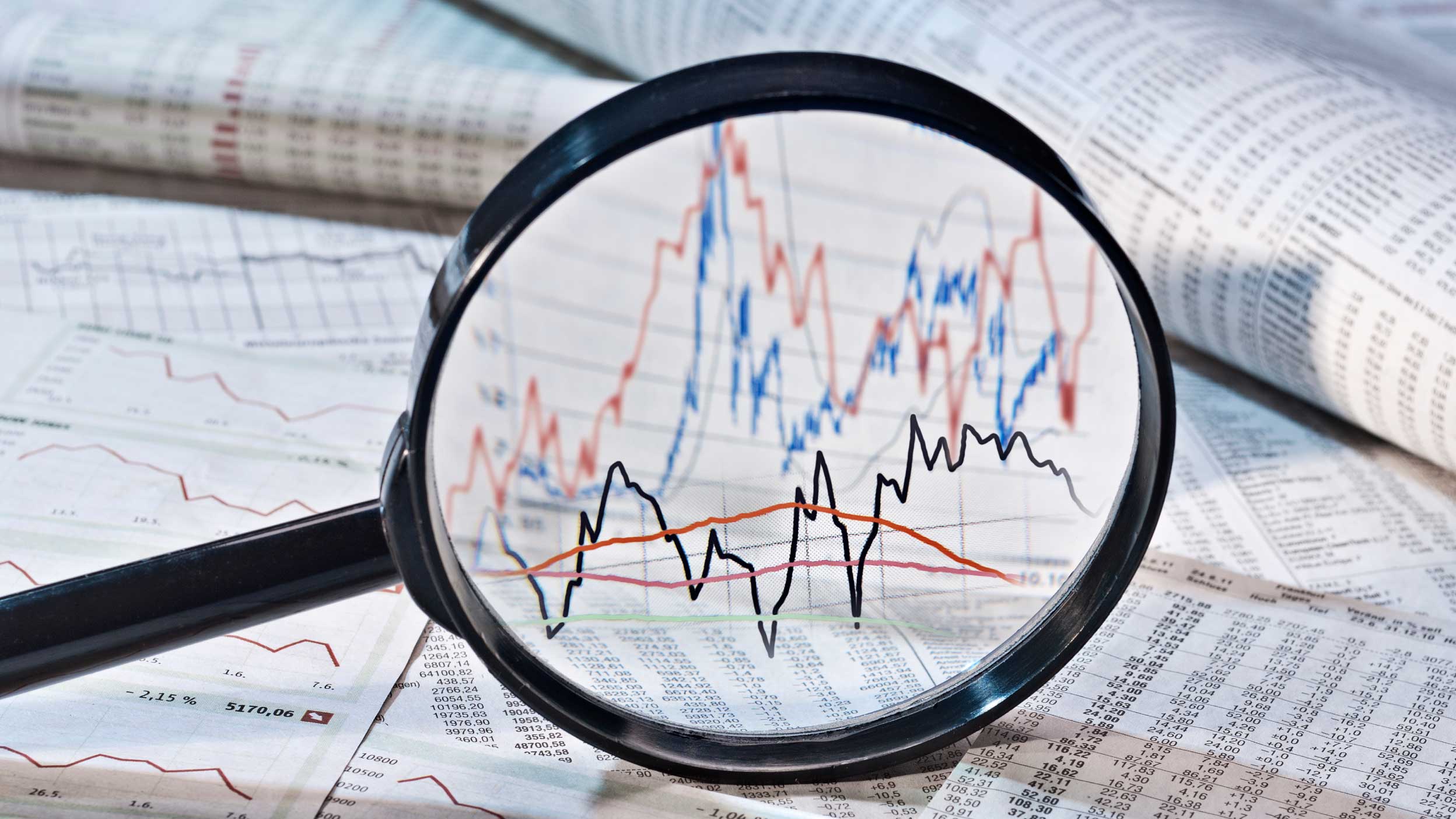
Fixed income investing with ETFs
ETFs can offer convenient access to broad and diversified baskets of bonds at a low cost. Discover our range of fixed income ETFs.

Uncertainty over the outlook increased in April following the "Liberation Day" tariff announcements, which caused a spike in market volatility.
Although net inflows picked up from a disappointing March, they remained subdued at just $1.8 billion, favouring safer haven asset classes such as government bonds and cash.
Investors are likely to keep their powder dry by continuing to favour less volatile exposures in the near term, while potentially limiting exposure to the US Dollar.
April saw mixed performance across fixed income markets, with a divergence of fortunes between different asset classes and regions. It was also a very volatile month as markets responded to the US "Liberation Day" announcements on tariffs and trade, which overshadowed economic data releases.
On April 2nd, President Trump announced a baseline 10% tariff on imports from all countries, with higher rates applied to a list of nations deemed to have unfair trade practices. China responded with retaliatory tariffs, leading the US to increase tariffs on Chinese goods to 125% (in addition to the existing 20% levies), raising concerns about trade wars between the US and other nations. However, after financial markets responded negatively to the policy announcements, President Trump announced a 90-day pause in the implementation of tariffs, which helped to restore some calm to markets later in the month.
With equity markets falling in response to the tariff announcements, US Treasuries initially rallied. However, the rally was short-lived, with yields rising sharply as initial concerns about the impact of tariffs on growth quickly turned to concerns about their impact on inflation and monetary policy, particularly with the US Dollar weakening at the same time.
The US Treasury market then calmed in the second half of the month as tariff implementation was delayed, with the benchmark 10-year Treasury ending the month 4 basis points lower in yield than at the end of March. Meanwhile, having been trading at historically tight levels, the risk-off sentiment early in the month drove credit spreads to widen sharply before recovering in the second half of the month as market volatility declined.
The best-performing markets during April were Euro Government Bonds and Gilts. They had performed poorly in March due to concerns about increased defense spending but rallied in April with expectations that tariffs would lead to lower growth and easier monetary policy in Europe.
Source: Bloomberg, Invesco as at 30 Apr 2025.
Uncertainty and market volatility led to April being a relatively slow month for flows into fixed income ETFs. Of the $2.2bn NNA, flows indicated a risk-off tone with government bond and cash management ETFs seeing inflows, while credit and emerging market debt ETFs experienced net selling. Government bond ETFs ($3.5bn) were the strongest category with investors favouring eurozone government bonds ($2.0bn) over US Treasuries ($1.0bn) following their underperformance in March. Cash management ($2.7bn) continued to see strong demand with fixed maturity ETFs ($0.2bn) the only other category to see positive flows. Investment grade credit (-$1.3bn) led the outflows with high yield (-$0.9bn) also experiencing material selling. In between these credit categories, emerging market debt saw $1.1bn of net outflows.
Source: Bloomberg, Invesco, as at 30 Apr 2025
While markets had previously struggled for clarity over the outlook prior to Liberation Day, the tariff announcements and the escalating tensions about a potential trade war with China, followed by a pause in their implementation, added to the uncertainty. In addition, ongoing conflicts between Russia and Ukraine and in the Middle East continue to make the path to peace difficult to find.
The uncertainty about US trade policy and its impact on the economy appears to have accelerated the rotation away from the US and into Europe in both equity and bond markets. Interestingly, the heightened volatility in the US Treasury market, along with the weakening US Dollar, may cause investors to diversify their government bond allocations out of US Treasuries and into European government bonds.
Indeed, while yield curves on both sides of the pond steepened in April, the US Treasury curve twisted around the 10-year point, with short-dated yields falling but longer-term yields rising as investors required additional term premium to take on the risk of longer maturities. Meanwhile, with credit spreads having bounced off near-term wides in the second half of April, the outlook for slower growth may best be played through European government bond ETFs, particularly those focused on shorter-dated maturities, or fixed-maturity ETFs that can help reduce the uncertainty of outcomes by locking in yields that are currently available.
Once again, investors became increasingly cautious in their fixed income allocations in April, with net inflows focused on government bond and cash management ETFs, while credit and emerging market debt ETFs experienced net outflows. While the outlook remains highly uncertain, investors are likely to continue allocating to 'safe haven' asset classes.
However, with the impact of tariffs likely to affect inflation differently in the US and Europe, it appears that central banks in Europe have more flexibility to ease monetary policy to support their economies, while the Federal Reserve may be hampered by the impact of tariffs on inflation in the near term. Additionally, with concerns lingering over further US Dollar weakness, investors may wish to increase allocations to non-USD denominated fixed income (or at least look for currency-hedged share classes to minimize their currency risk associated with the US Dollar).
Source: Bloomberg, as at 30 Apr 2025.

ETFs can offer convenient access to broad and diversified baskets of bonds at a low cost. Discover our range of fixed income ETFs.

Gold had a remarkable month, gaining 9.3% after breaking through US$3,000 and ending March at US$3,124. Economic and geopolitical uncertainty drove the gold price higher ahead of the trade tariffs scheduled to be announced on 2 April. Discover insights into the key macro events and what we think you should be keeping your eyes on in the near term.

The European ETF market had its best quarter in terms of flows. Read the latest to find out more.